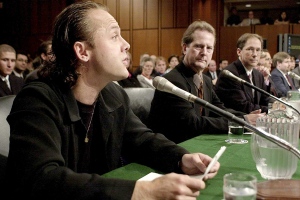Revenge of the Starving Artist
“Our response to date as an industry has been as equally inefficient and in many cases emotional. “You’re gonna miss us when we’re gone” is not much of a business model.” – From MediaNews Group and Journal Register Company CEO John Paton’s speaking notes for an address to the Canadian Journalism Foundation
The expression “accidental geniuses” may best describe music duo Jack Conte and Nataly Dawn, alias Pomplamoose. Pomplamoose is a truly independent band that also makes quite a bit of money. They stumbled on the secrets to their success entirely by accident. “They all wanted the MP3 of the song that I’d just posted [on youtube]. That’s when I realized, these videos I’m making are the products!” Soon after, they discovered that putting merchandise into their videos increased demand. The duo have leveraged new technologies to make enough money to do what they want and remain independent.
The media has changed right before our eyes. The record industry has sunk into oblivion, even as they continue to rail against their sworn enemy, the Internet. The film industry will soon encounter a reckoning of their own if they don’t learn how to manage digital content and give consumers what they want. Even publishers are staring their doom in the face; e-books will put them out of business if Amazon and Apple continue to chip away at their market share.
While some artists like Pomplamoose are using these new changes to their advantage, others are more skeptical. Metal band Metallica famously took on Napster. Author Jonathan Franzen ranted about the e-book. They are not alone. Artists wonder if they will actually make money from new media: mp3s, e-books, streaming video, Internet radio. These fears get at the heart of one vital question: what is art?
How we define art affects our perspective of this entire issue. Do we define art, as Steven Pressfield does, as a gift? Or perhaps, like Tolstoy, we define art as an ability to make a deep emotional connection between artist and audience? We must then ask ourselves if art is something that we pay for. Do we reward the artist? Is the onus even on the audience? What of the artist? Does an artist make his art for a reward or because he has to?
In the mid-nineteenth century, Bohemianism became popular among European artists. This gave rise to our modern notion of the “starving artist.” For whatever reason, we’ve come to believe that artists ought to suffer for their work. Or rather, that suffering validates the work of an artist. While many artists, like van Gogh or poet Dylan Thomas, have lived and worked in abject poverty, most artists have not. Since the mid-twentieth century, most artists have either profited enough by their work to continue making their art or have kept other jobs to make ends meet. Few artists have the luxury of a patron, as James Joyce did.
Yet, this notion of the starving artist raises important questions about contemporary artists in music, literature, and film. Are they really entitled to a life of luxury on account of their work? Shouldn’t their art come before their monetary concerns? “Well,” they might counter, “people are listening/watching/reading the fruits of our labor for free!” But isn’t this exactly what every artist strives for, to reach as wide an audience as possible with his art? New media has made that easier than ever before. Whether the artist becomes profitable by it is in his hands. Certainly it’s not easy to make money the way that Pomplamoose did, but it is possible.
And to all those folks who worry about the quality of art, there’s only one invariable truth. The new media will exponentially increase the amount of crap out there – music, film, and literature. However, it also means that more artists than ever before will have an even wider platform for their art. One study has confirmed that the quality of music has not decreased since the rise of music downloads. Food for thought.
